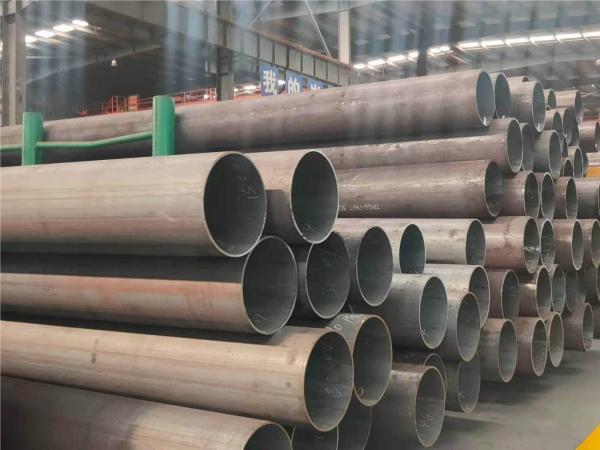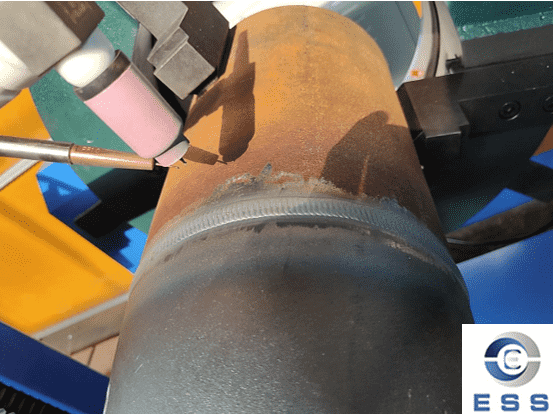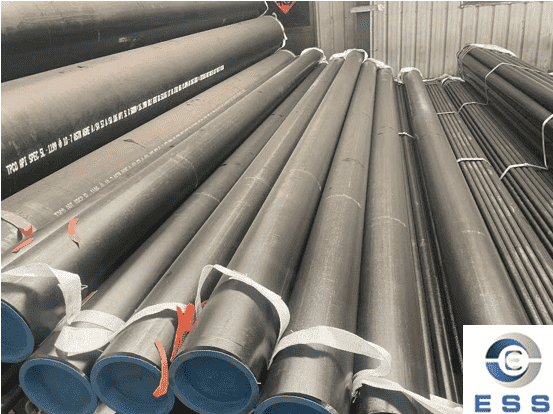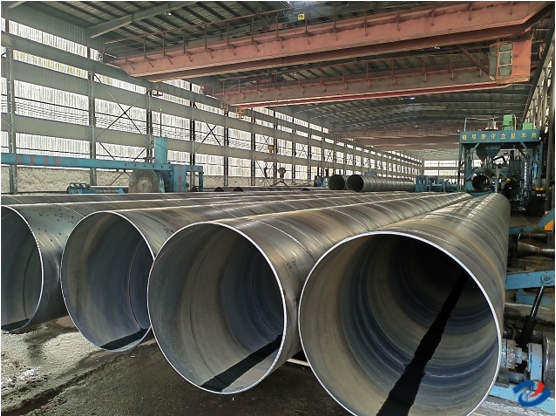Benefits of Seamless Pipe over Welded Pipe
What are Seamless Pipes?
Seamless pipes are pipes that are manufactured without any weld or seam. They are made by piercing a solid cylindrical billet or a hollow cylindrical shell to form a hollow pipe. The seamless pipes can be produced in various sizes and thicknesses depending on the application. The production process involves heating the raw material and then rolling it to form the desired shape. The seamless pipes are then heat treated to enhance their mechanical properties.

What are Welded Pipes?
Welded pipes are pipes that are manufactured by welding two or more pieces of metal together. The welding process involves melting the edges of the metal pieces to form a joint. The welding process can be done using different techniques such as electric resistance welding, electric fusion welding, and gas welding. Welded pipes can be made in different sizes and thicknesses depending on the application.
Seamless vs welded pipe
1、Strength and Durability
Seamless pipes have higher strength and durability than welded pipes. The absence of a seam or weld in seamless pipes eliminates the weak points that can cause failure under stress. The seamless pipes can withstand higher pressure, temperature, and mechanical stress without breaking or leaking. This makes seamless pipes ideal for high-pressure applications such as oil and gas pipelines and boilers.
Welded pipes, on the other hand, have weaker points at the welds. The welding process can cause defects such as porosity, cracks, and inclusions that can reduce the strength of the pipe. The welded pipes are also susceptible to corrosion and wear at the welds due to the difference in material properties between the weld and the base metal. This can lead to leaks and failures in the pipes.
2、Corrosion Resistance
Seamless pipes have better corrosion resistance than welded pipes. The seamless pipes are made from a single piece of metal, which eliminates the possibility of corrosion at the welds. The seamless pipes can also be made from corrosion-resistant materials such as stainless steel, nickel alloys, and titanium alloys. This makes seamless pipes ideal for corrosive environments such as chemical plants, marine applications, and offshore oil rigs.
Welded pipes, on the other hand, are susceptible to corrosion at the welds. The welding process can cause a change in the microstructure of the metal, which can make it more susceptible to corrosion. The welds can also trap moisture and other corrosive substances that can cause corrosion. This can lead to leaks and failures in the pipes.
3、Cleanliness and Hygiene
Seamless pipes are cleaner and more hygienic than welded pipes. The seamless pipes have a smooth surface that does not trap dirt, debris, or bacteria. This makes seamless pipes ideal for applications that require high levels of cleanliness and hygiene such as food processing, pharmaceuticals, and medical devices.
Welded pipes, on the other hand, have a rough surface at the welds that can trap dirt, debris, and bacteria. The welds can also have crevices that can be difficult to clean, which can lead to the growth of bacteria. This can be a serious health hazard in applications such as food processing and medical devices.
4、Cost-Effective
Seamless pipes can be more cost-effective than welded pipes in certain applications. The seamless pipes have a higher initial
cost compared to welded pipes due to the more complex manufacturing process involved. However, seamless pipes offer long-term cost savings due to their higher strength and durability. The seamless pipes require less maintenance and replacement, reducing downtime and overall operational costs. Additionally, the higher corrosion resistance of seamless pipes can extend their service life, further reducing the need for replacements.
Welded pipes may have a lower initial cost compared to seamless pipes, but they can incur higher maintenance and repair expenses over time. The weak points at the welds are more prone to corrosion, leaks, and failures, requiring frequent inspections and repairs. The welding process itself also adds additional costs, including labor, equipment, and quality control measures to ensure the integrity of the welds.
5、Uniformity and Consistency
Seamless pipes offer superior uniformity and consistency in terms of wall thickness and dimensional accuracy. The manufacturing process of seamless pipes allows for precise control over the dimensions and thickness throughout the entire length of the pipe. This uniformity ensures consistent performance and makes seamless pipes suitable for applications that require tight tolerances, such as high-precision machining and instrumentation.
In contrast, welded pipes may exhibit variations in wall thickness and dimensional accuracy, particularly at the welds. The welding process introduces heat and structural changes that can result in uneven welds and inconsistencies in the pipe's physical properties. These variations can affect the performance of the pipe in certain applications, where precision and uniformity are critical.
6、Improved Flow Characteristics
Seamless pipes offer smoother internal surfaces compared to welded pipes. The absence of welds eliminates the rough edges and irregularities found in welded pipes, providing a smoother path for fluid flow. This smooth surface reduces frictional losses, pressure drops, and turbulence, resulting in improved flow characteristics. It enhances the efficiency of fluid transportation, reduces energy consumption, and allows for higher flow rates.
Welded pipes, with their weld seams, can create turbulent flow patterns and increased resistance to fluid flow. The rough surfaces at the welds can cause additional friction, resulting in higher energy requirements for fluid transport. In applications where fluid flow efficiency is crucial, such as pipelines and plumbing systems, seamless pipes provide a clear advantage.
7、Flexibility and Versatility
Seamless pipes offer greater flexibility and versatility in terms of design and customization. The seamless manufacturing process allows for the production of pipes with complex shapes, sizes, and lengths to meet specific project requirements. Seamless pipes can be easily adapted to various applications, including curved and coiled configurations, without compromising their structural integrity.
Welded pipes, on the other hand, have limitations in terms of design flexibility. The welding process restricts the shape and size options, making it more challenging to produce pipes with intricate designs or custom lengths. Welded pipes are more suitable for standard straight configurations, while seamless pipes provide the necessary versatility for unconventional installations and specialized applications.
Conclusion
Seamless pipes offer several significant advantages over welded pipes. Their superior strength, durability, corrosion resistance, cleanliness, and cost-effectiveness make them a preferred choice in many industries. The seamless manufacturing process ensures uniformity, dimensional accuracy, improved flow characteristics, and flexibility in design. While welded pipes may have lower initial costs, the long-term benefits of seamless pipes, including reduced maintenance, extended service life, and enhanced performance, outweigh the initial investment. As a result, seamless pipes are widely used in critical applications such as oil and gas transportation, chemical processing, power generation, and infrastructure development.













 Eastern Steel Manufacturing Co.,Ltd not only improve product production and sales services, but also provide additional value-added services. As long as you need, we can complete your specific needs together.
Eastern Steel Manufacturing Co.,Ltd not only improve product production and sales services, but also provide additional value-added services. As long as you need, we can complete your specific needs together.










